|
ID |
Nickname |
Country / City |
Languages |
Taxonomies |
Comment |
Project / Group |
Map |
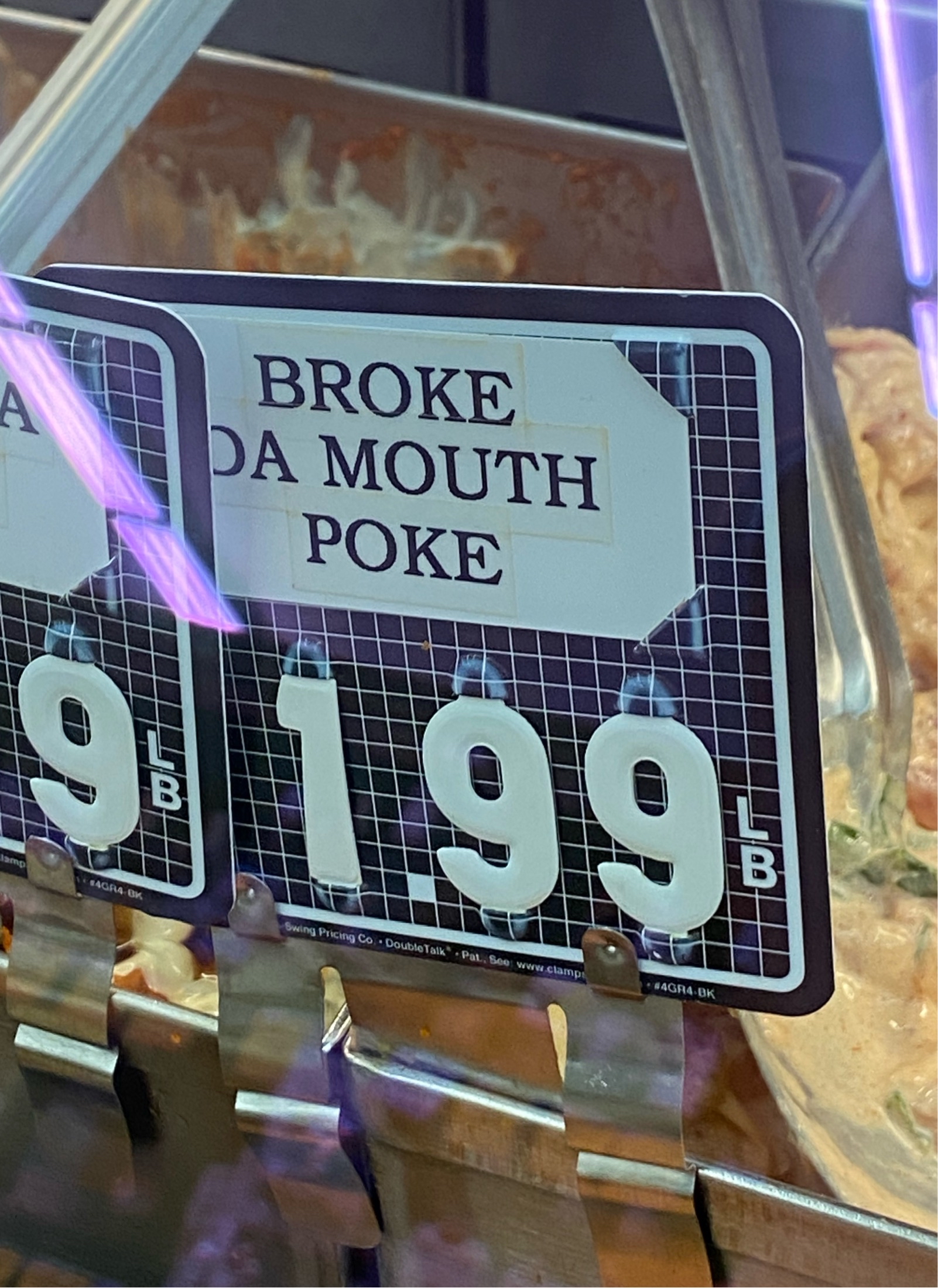
|
59565
|
|
United States
Pearl City
|
|
|
Here we see Pidgin being user as the name of a variety of Poke. The Pidgin implies that this poke is very ono. They probably used Pidgin to emphasize the deliciousness of the poke.
|
Multilingual Hawaiʻi
|
|
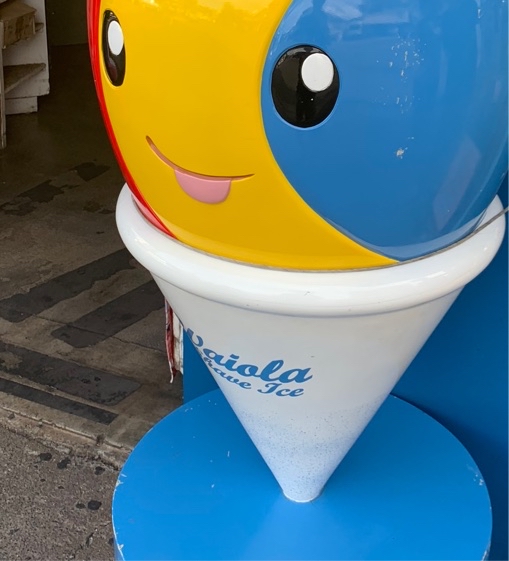
|
43438
|
|
United States
Honolulu
|
|
|
(HC)
Purpose: Statue of the mascot for Waiola Shave Ice, a popular dessert shop on Oahu.
Audience: Tourists for pictures, customers of the shop.
Format: ABS/Plaster statue of the shave ice mascot.
Message: "Shave ice" is derived from "Kakigori", a popular ice snack from Japan. After the plantation era, Hawaii had took substantial inspiration from the Kakigori into the creation of "Shave ice", essentially syrup poured over what is finely crushed, or "shavings" of ice.
|
Multilingual Hawaiʻi
|
|
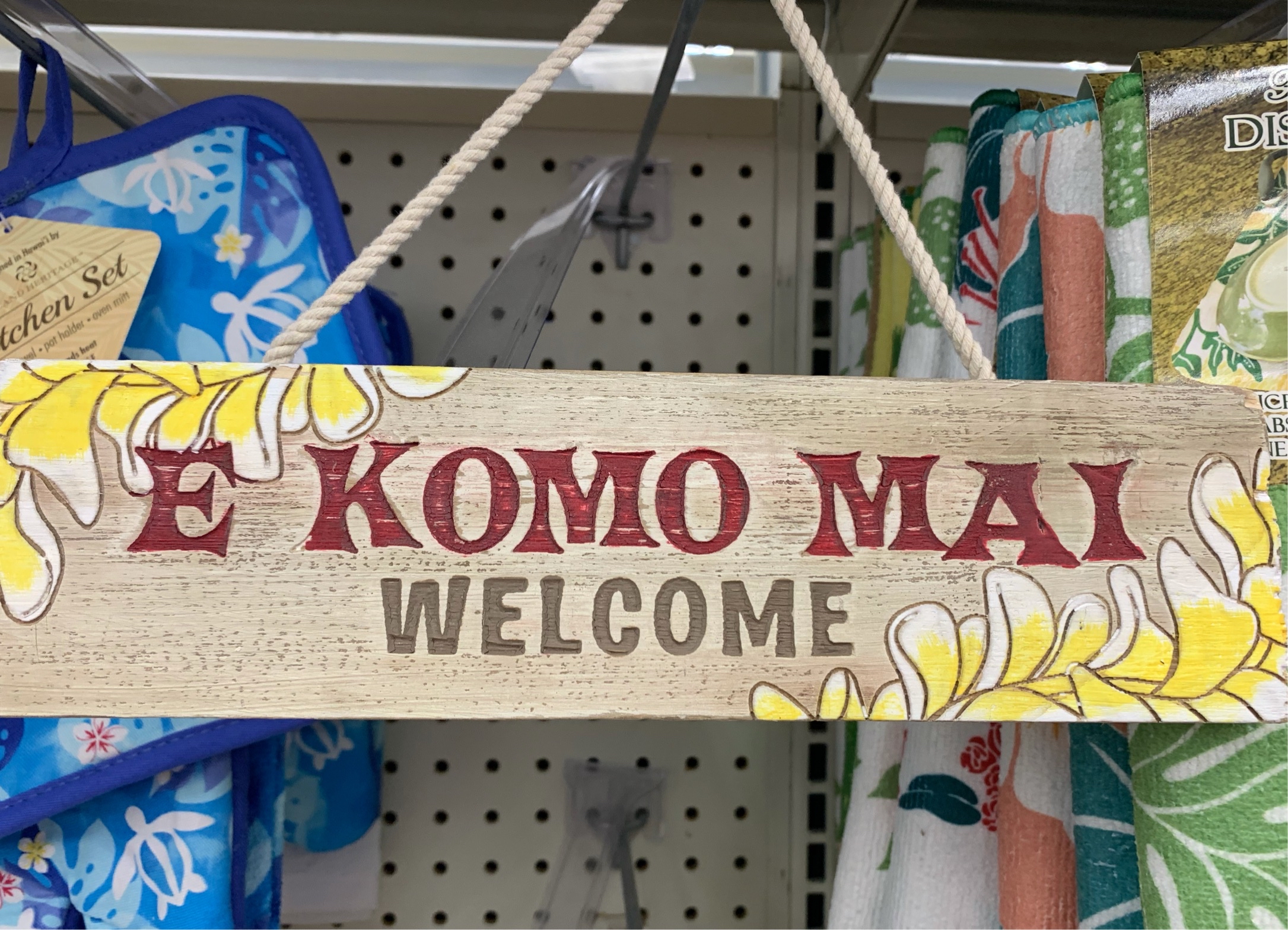
|
43950
|
|
United States
Kaneohe
|
|
|
SU
- medium: The sign is printed on a piece of wood that you hang in or outside of your home.
- domain: The context of the sign is using the phrase “E komo mai” to welcome someone into or to your home.
- audience: The sign is intended for people who are visiting one’s home, both local and nonlocal.
- function: The sign is trying to tell people that they are welcome at the place where this sign is hung.
- language: The language that is dominant on this sign is Hawaiian, “E komo mai” with a little bit of English, “Welcome”.
The phrase “E komo mai” means “Welcome” in Hawaiian.
|
Multilingual Hawaiʻi
|
|
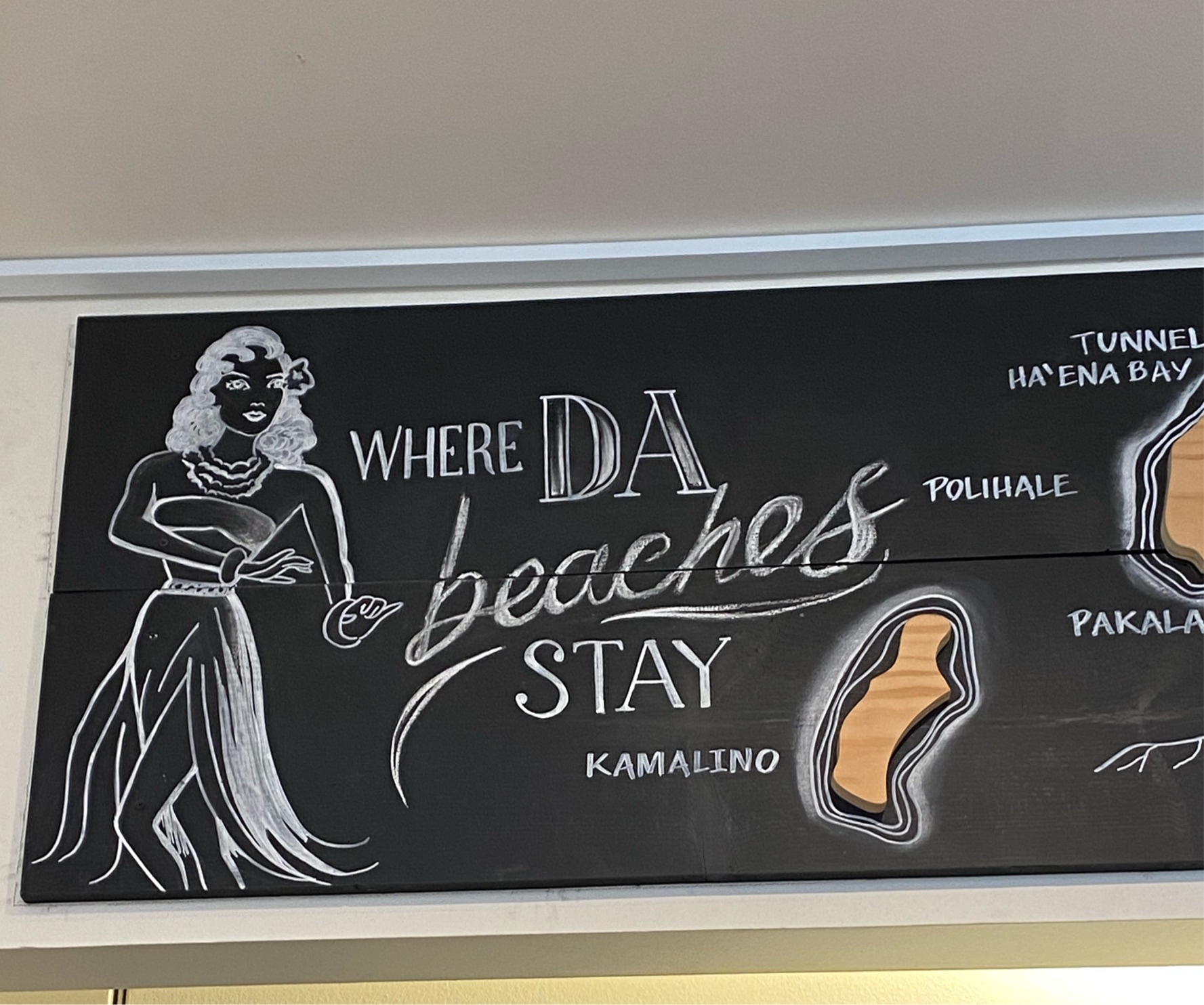
|
59566
|
|
United States
Honolulu
|
|
|
Here we see Pidgin being used in a sign in a retail clothing store to educate probably tourists about where the beaches are and probably some locals who are not aware of where all the beaches are in Hawaii. This is accompanied by a drawing of a hula dancer which I’m not sure what the associated of hula and beaches are. The design is also drawn with a blackboard and chalk looking design to reinforce the education purpose of the sign.
|
Multilingual Hawaiʻi
|
|
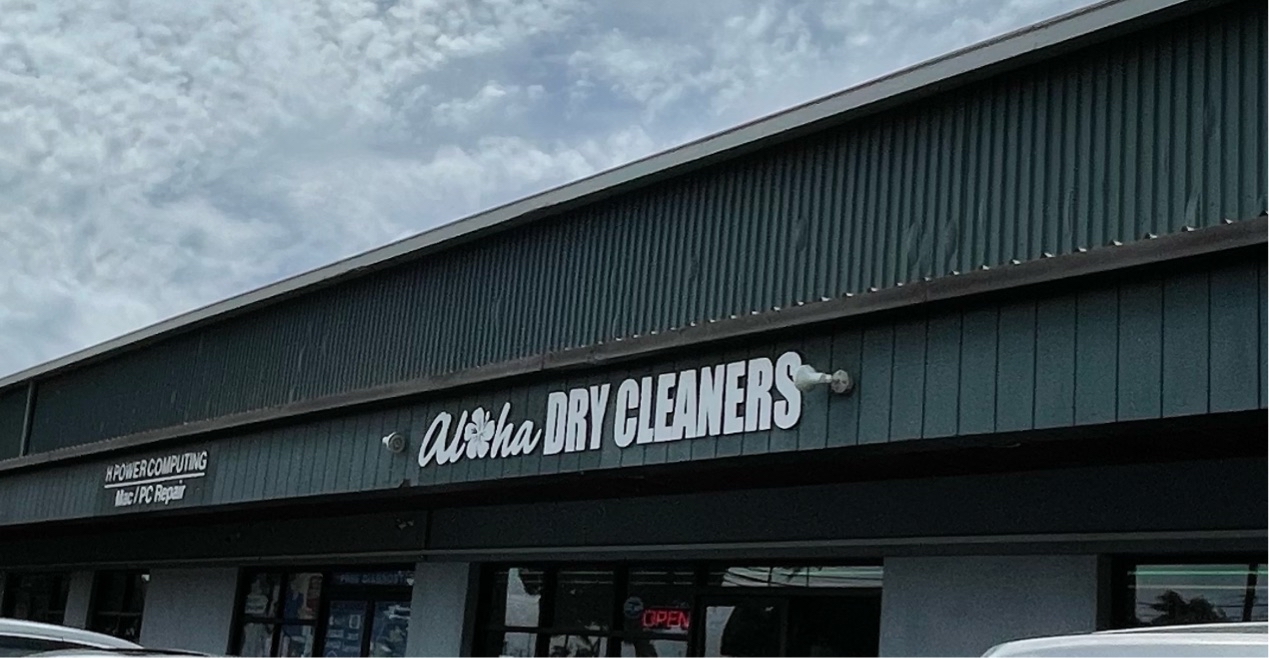
|
43951
|
|
United States
Honolulu
|
|
|
SU
- medium: The sign is printed on a building located at Ward Village.
- domain: The context of the sign is that it is a dry cleaners that also washes and folds your clothes for you, making it aloha fresh.
- audience: The sign is intended for people who are passing by the area. It is intended for nonlocals and locals.
- function: The sign is trying to inform people that there is a dry cleaners located there in Ward Village.
- language: The language that is dominant on this sign is English, “Dry Cleaners” with a little Hawaiian, “Aloha”.
The word “aloha” means “hello, goodbye, love” in Hawaiian.
|
Multilingual Hawaiʻi
|
|
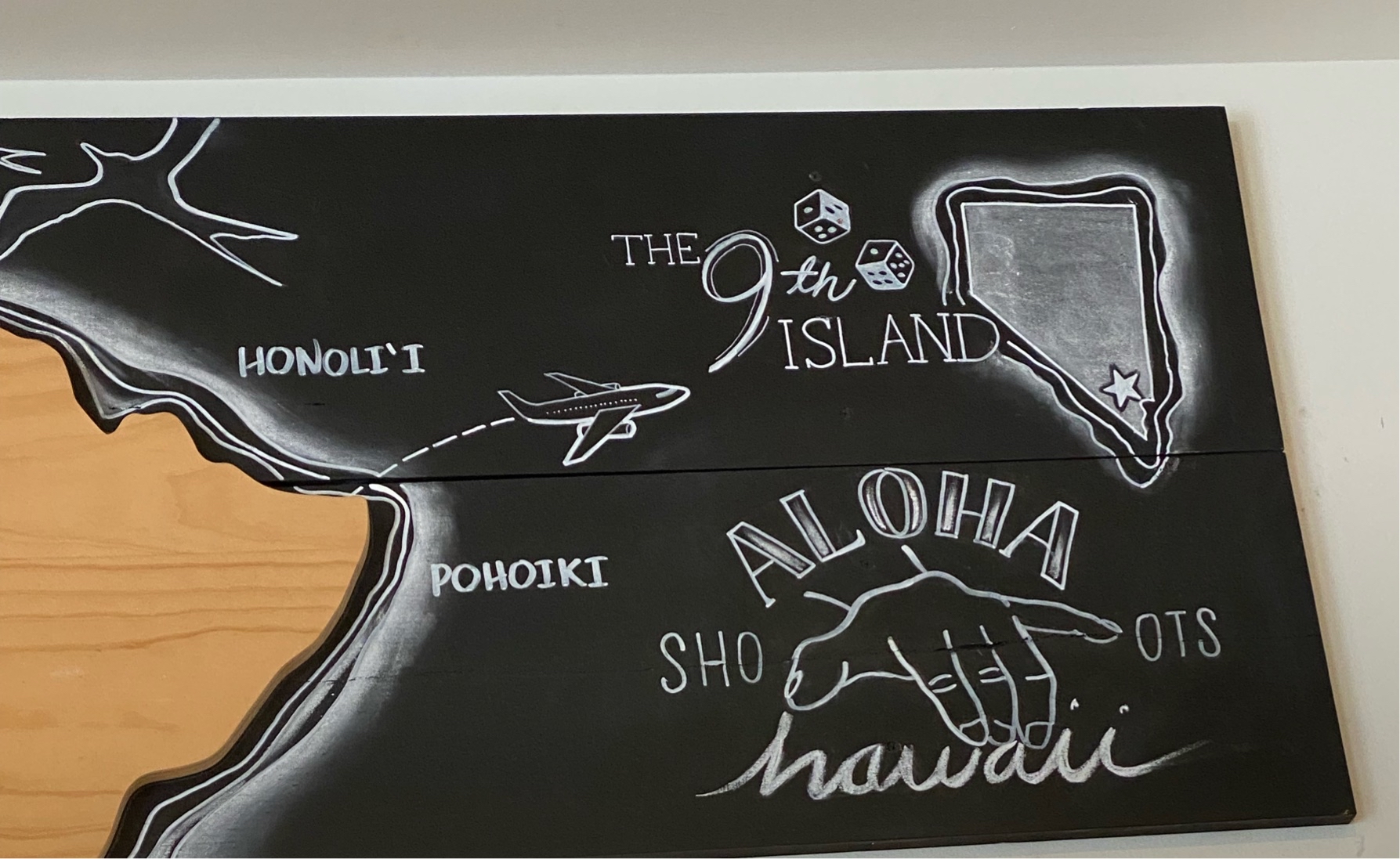
|
59567
|
|
United States
Honolulu
|
|
|
This s
|
Multilingual Hawaiʻi
|
|
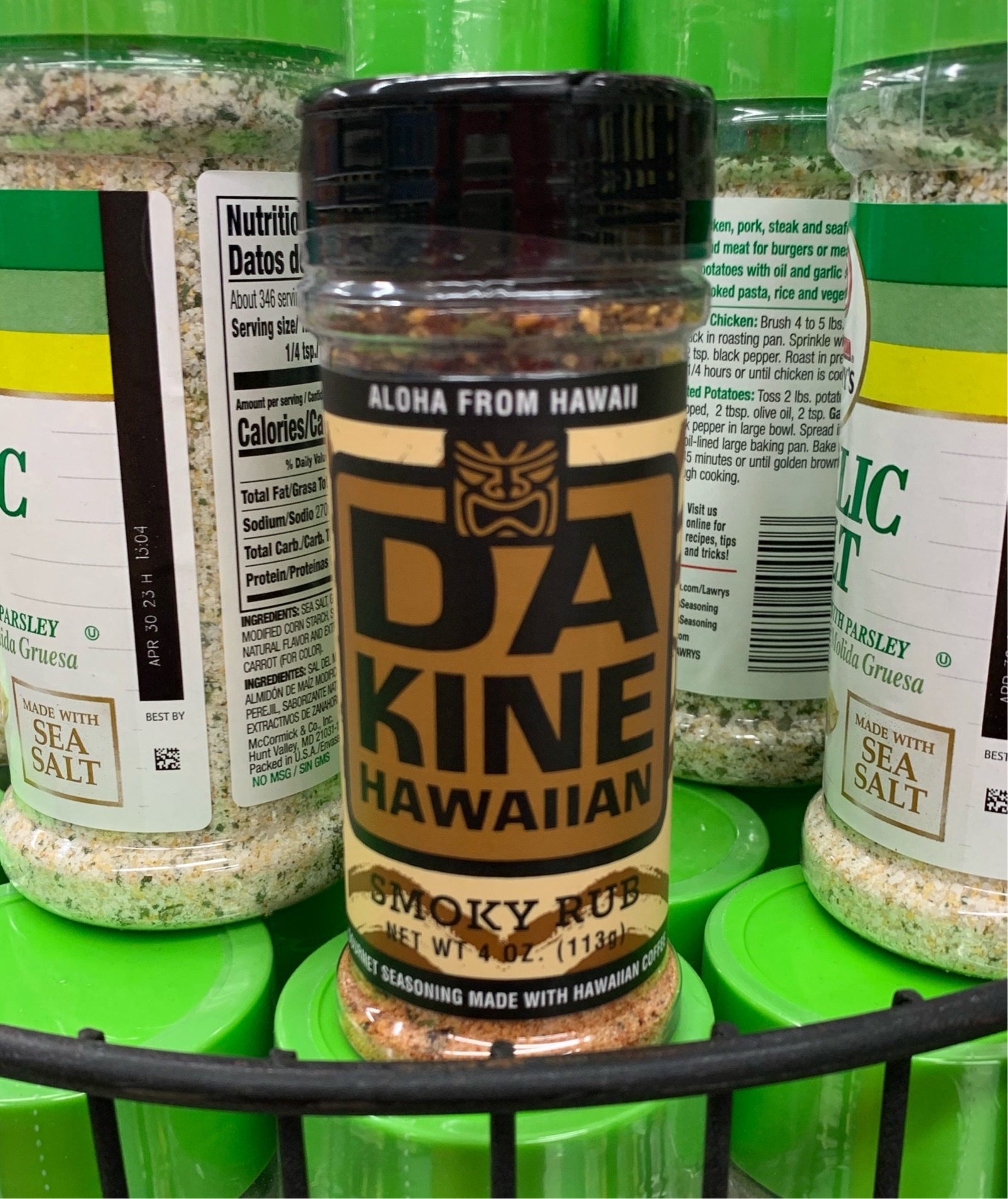
|
43952
|
|
United States
Honolulu
|
|
|
SU
- medium: The sign is printed on a bottle of seasoning.
- domain: The context of this sign is that it is a seasoning with smoky rub in it (smoked paprika).
- audience: This sign is intended for the public in general. Anyone who is in the store passing this seasoning or buying it. Intended for local and nonlocal.
- function: This sign is trying to tell you that it is made in Hawai’i as it says at the top “aloha from Hawai’i”.
- language: The language that is dominant on this sign is Pidgin or HWC with some Hawaiian and English.
The phrase “da kine” means “the kind” when it is roughly translated and it is similar to the Pidgin expression “any kine” which means “any kind”. It is usually used when you can’t put your finger on what you’re trying to say. For example, “Um…da kine, he went to the grocery store already.”, “She wen go mess up my da kine.”, “He’s so da kine.”
|
Multilingual Hawaiʻi
|
|

|
43953
|
|
United States
Honolulu
|
|
|
SU
- medium: The sign is printed on a light up sign above the restaurant.
- domain: The context of this sign is that Griddle N Grindz is a Korean BBQ restaurant that serves plate lunches.
- audience: This sign is intended for people who are passing through the area, for locals and nonlocals.
- function: The sign is trying to inform people about the restaurant as they pass by and catch their attention enough to make them want to try their food.
- language: The language that is dominant on this sign is Pidgin or HWC, “Grindz” with a little English, “Griddle”.
The word “grindz” is translated to “food” in Pidgin.
|
Multilingual Hawaiʻi
|
|
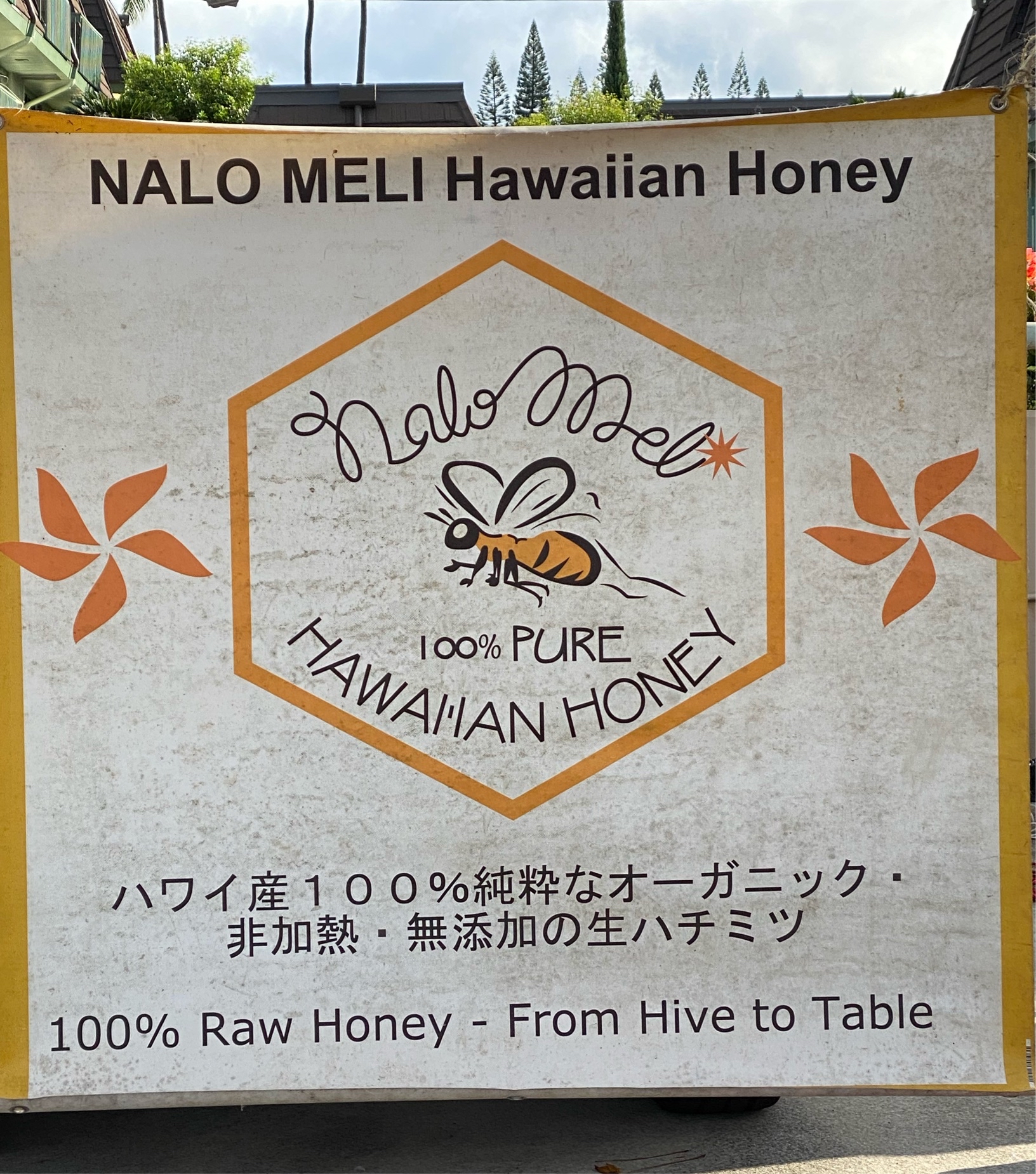
|
38578
|
|
United States
Aiea
|
|
|
—
|
Multilingual Hawaiʻi
|
|
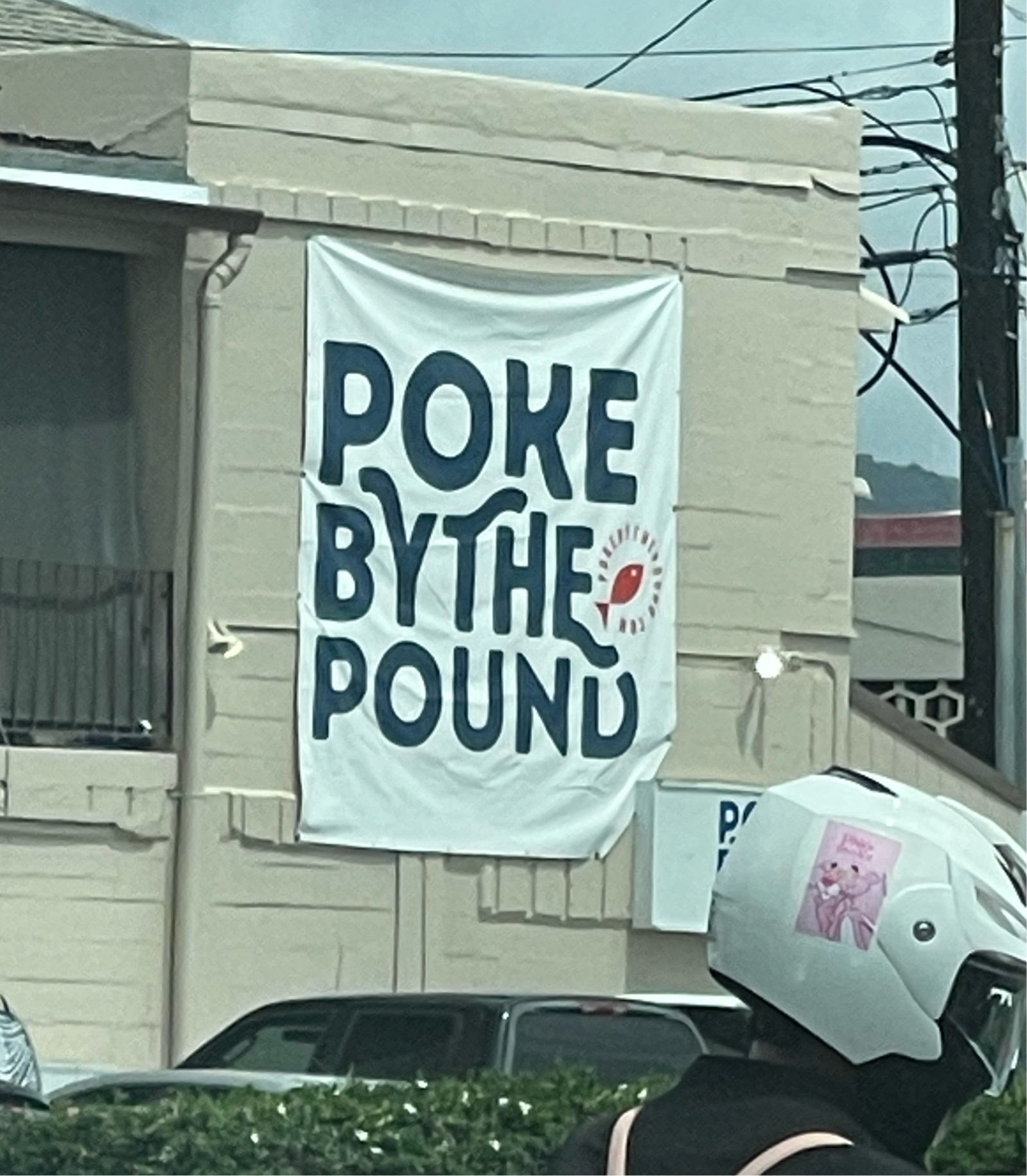
|
43954
|
|
United States
Honolulu
|
|
|
SU
- medium: The sign is printed on a piece of cloth on the front of a building.
- domain: The context of the sign is that Poke by the Pound is a fresh poke and seafood market.
- audience: This sign is intended for people who are passing by this place and might not see the smaller sign that is behind the girl’s helmet in this photo. This sign is intended for locals and nonlocals.
- function: The sign is trying to inform people about the seafood market and get them intrigued in trying the poke.
- language: The language that is dominant on this sign is English, “by the pound” with a little Pidgin, “poke”.
The word “poke” can be a Pidgin term that means to slice, or cut, wood or fish into crosswise pieces and is often used to describe sliced, or cubed, fish that is ready for consumption.
|
Multilingual Hawaiʻi
|
|

|
38579
|
|
United States
Aiea
|
|
|
—
|
Multilingual Hawaiʻi
|
|
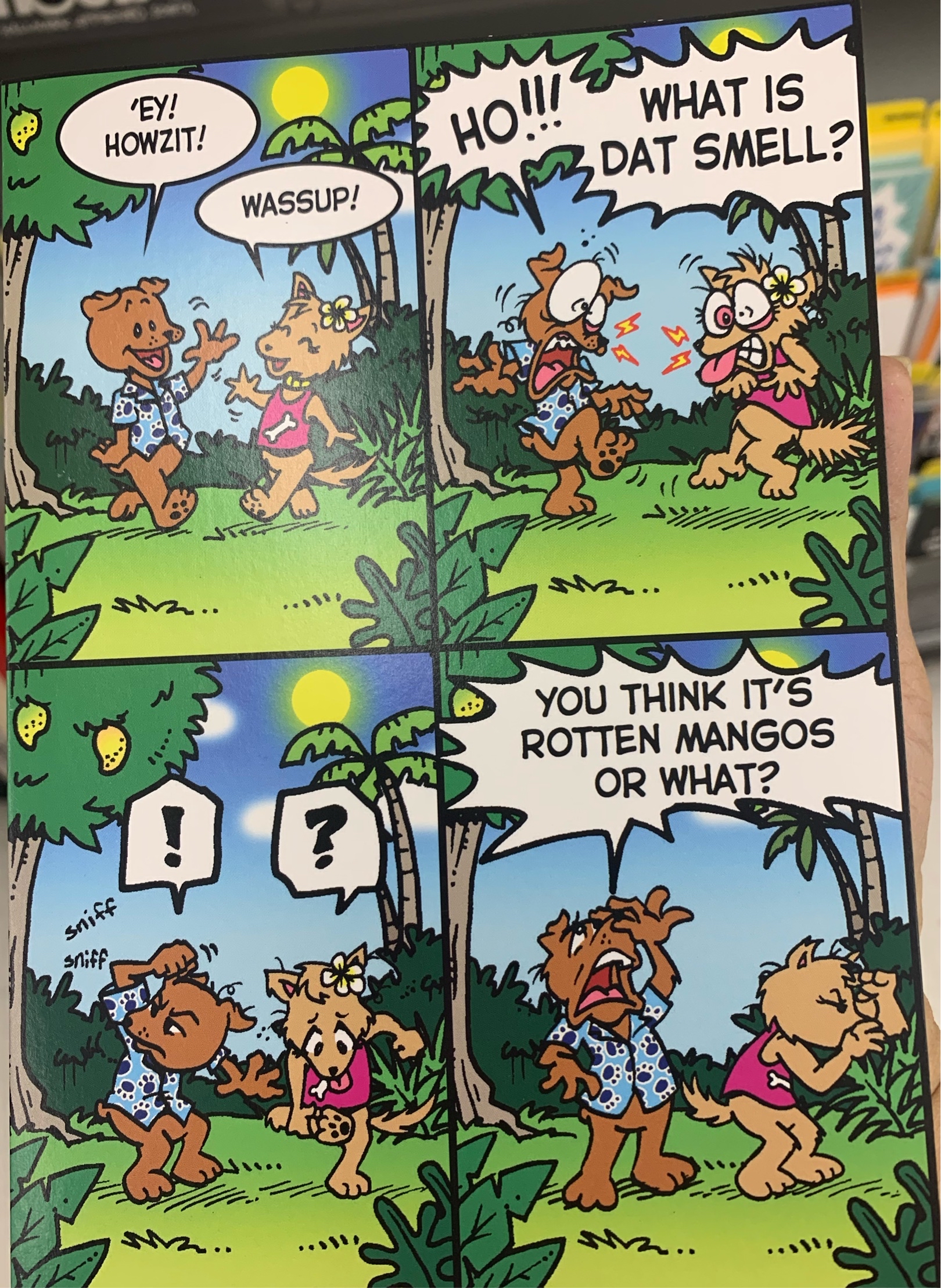
|
43955
|
|
United States
Kaneohe
|
|
|
SU
- medium: The sign is printed on a card.
- domain: The context of the sign is that it is two friends meeting each other but they smell something rotten and they use the Pidgin language to express what they’re thinking.
- audience: The sign is intended for the general public. Mainly only the locals would probably understand it and nonlocals would most likely have a harder time.
- function: The sign is trying to make the receiver of this card laugh and is used for entertainment purposes.
- language: The language that is dominant on this sign is Pidgin or HWC with a little English.
The phrase “Ey! Howzit!” is translated to “Hey, how are you?” of “Hey what’s going on?”. “Howzit” is a combination of the words “how”, “is”, and “it”. “Ho” is translated to “Woah” and “dat” is translated to “that”. The last sentence on the card, “You think it’s rotten mangos or what?” translates to “Do you think it’s rotten mangos?”.
|
Multilingual Hawaiʻi
|
|
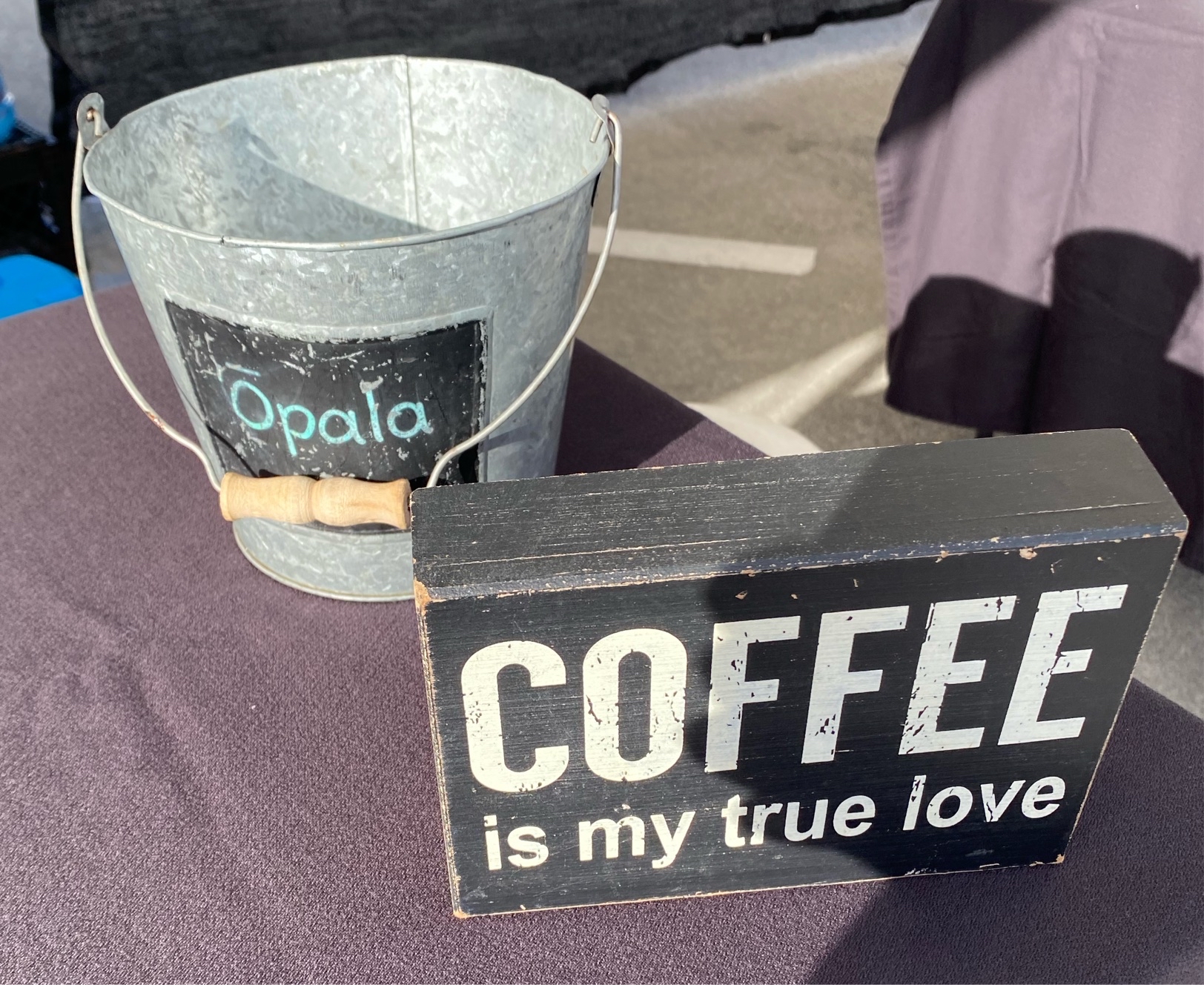
|
38580
|
|
United States
Aiea
|
|
|
—
|
Multilingual Hawaiʻi
|
|

|
47290
|
|
United States
Kailua
|
|
|
KA - Here the Hawaiian is kū kia'i mauna, which means to stand strong as guard of the mountain. in this case referring to Mauna Kea
|
Multilingual Hawaiʻi
|
|
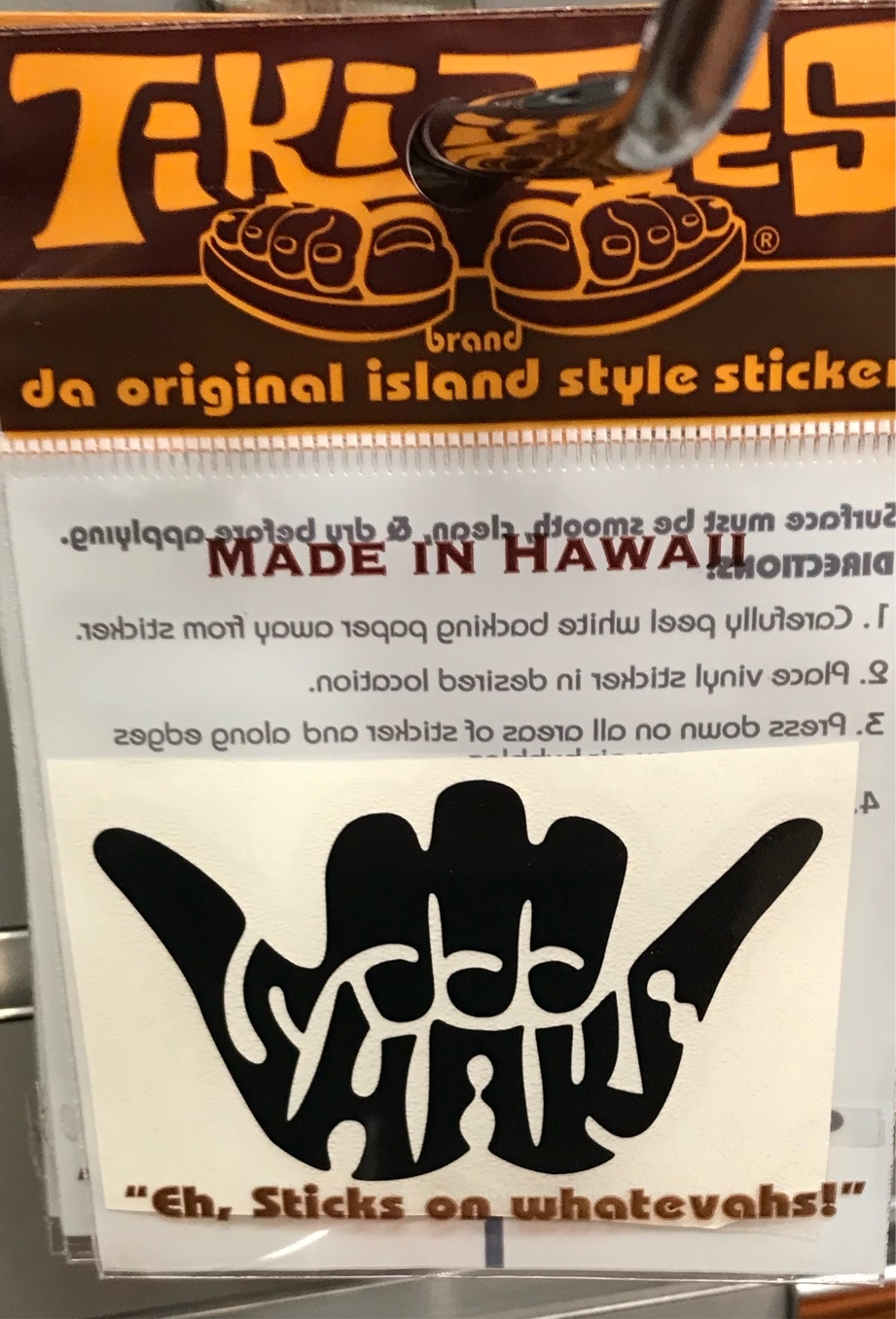
|
25787
|
|
United States
Honolulu
|
|
|
“EH, sticks on whatevahs” means “it sticks on whatever (anything)”. It sounds authentic but is more aimed at tourists, so it is synthetic.
|
Multilingual Hawaiʻi
|
|

|
38847
|
|
United States
Kalihi
|
|
|
—
|
Multilingual Hawaiʻi
|
|
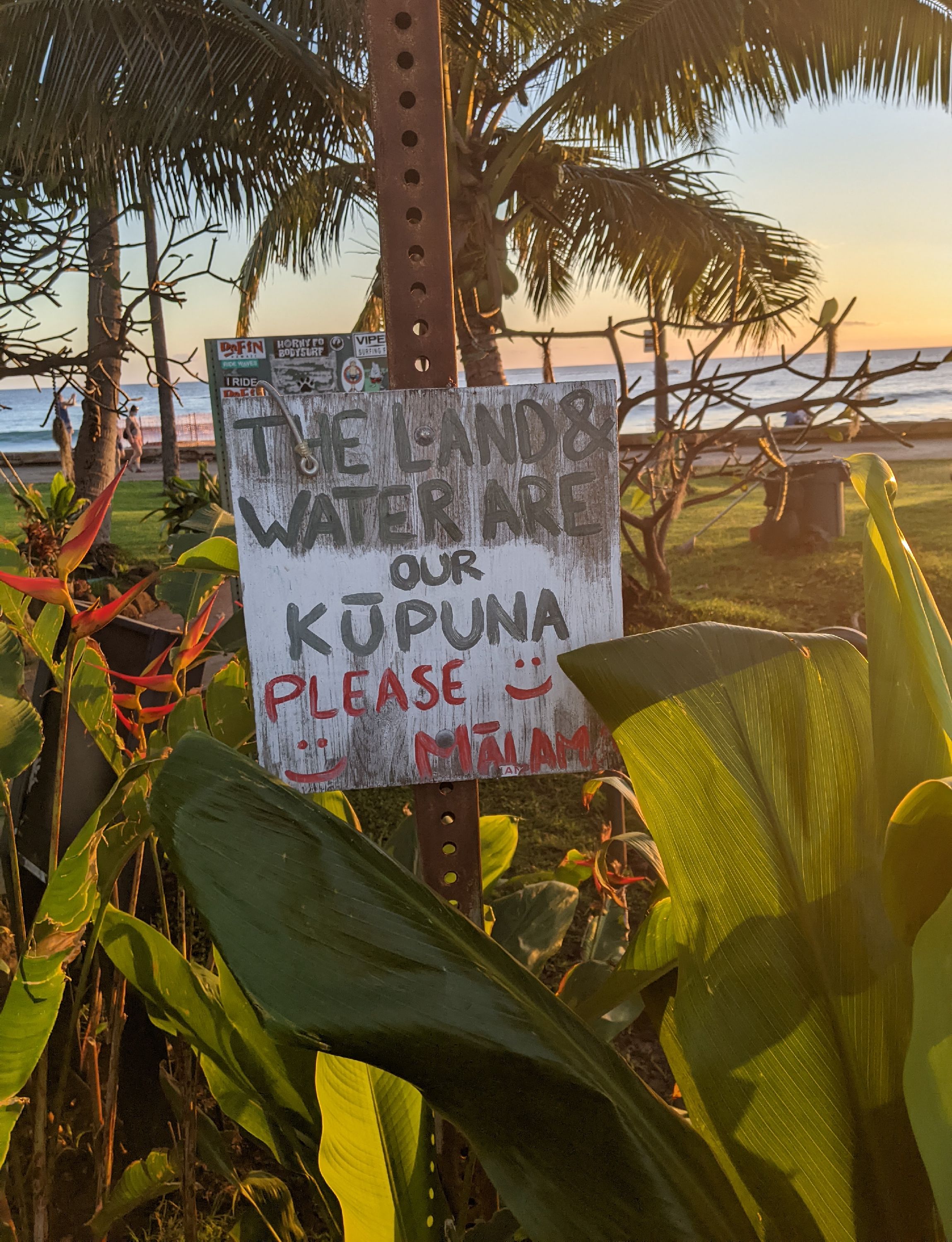
|
47807
|
|
United States
Honolulu
|
|
|
—
|
Multilingual Hawaiʻi
|
|
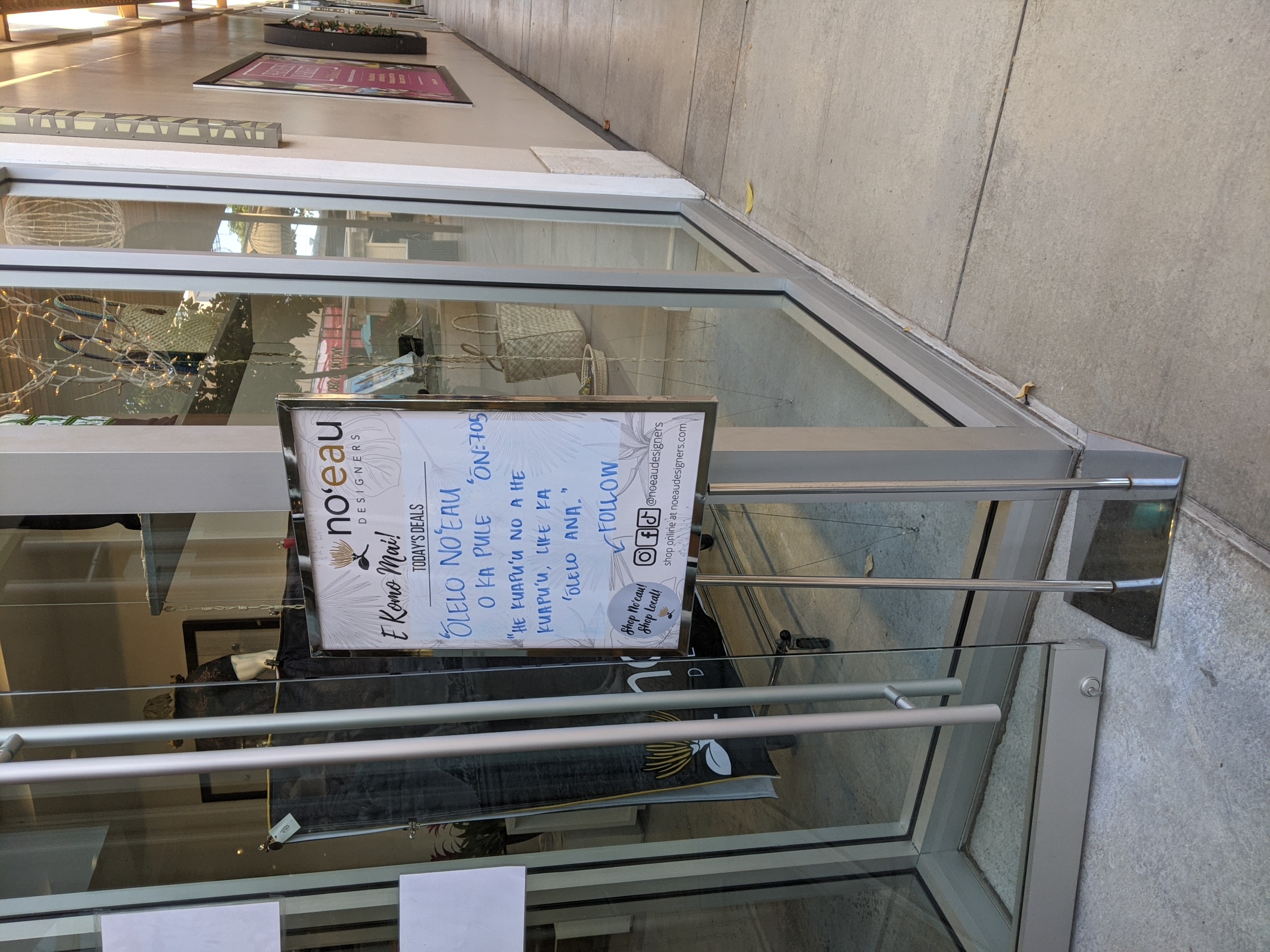
|
38848
|
|
United States
Kapolei
|
|
|
—
|
Multilingual Hawaiʻi
|
|

|
47300
|
|
United States
Honolulu
|
|
|
GM EXTRA CREDIT- I took this photo on the bus passing by going to Ala Moana mall. This is a beautiful moral stating “greetings aloha from Waikiki” which I would assume that someone local painted because they added quite a lot of detail ( even in the letters they added all the popular places/things in general around Waikiki). I bet lots of tourists love this moral to take pictures and to post on social media.
|
Multilingual Hawaiʻi
|
|
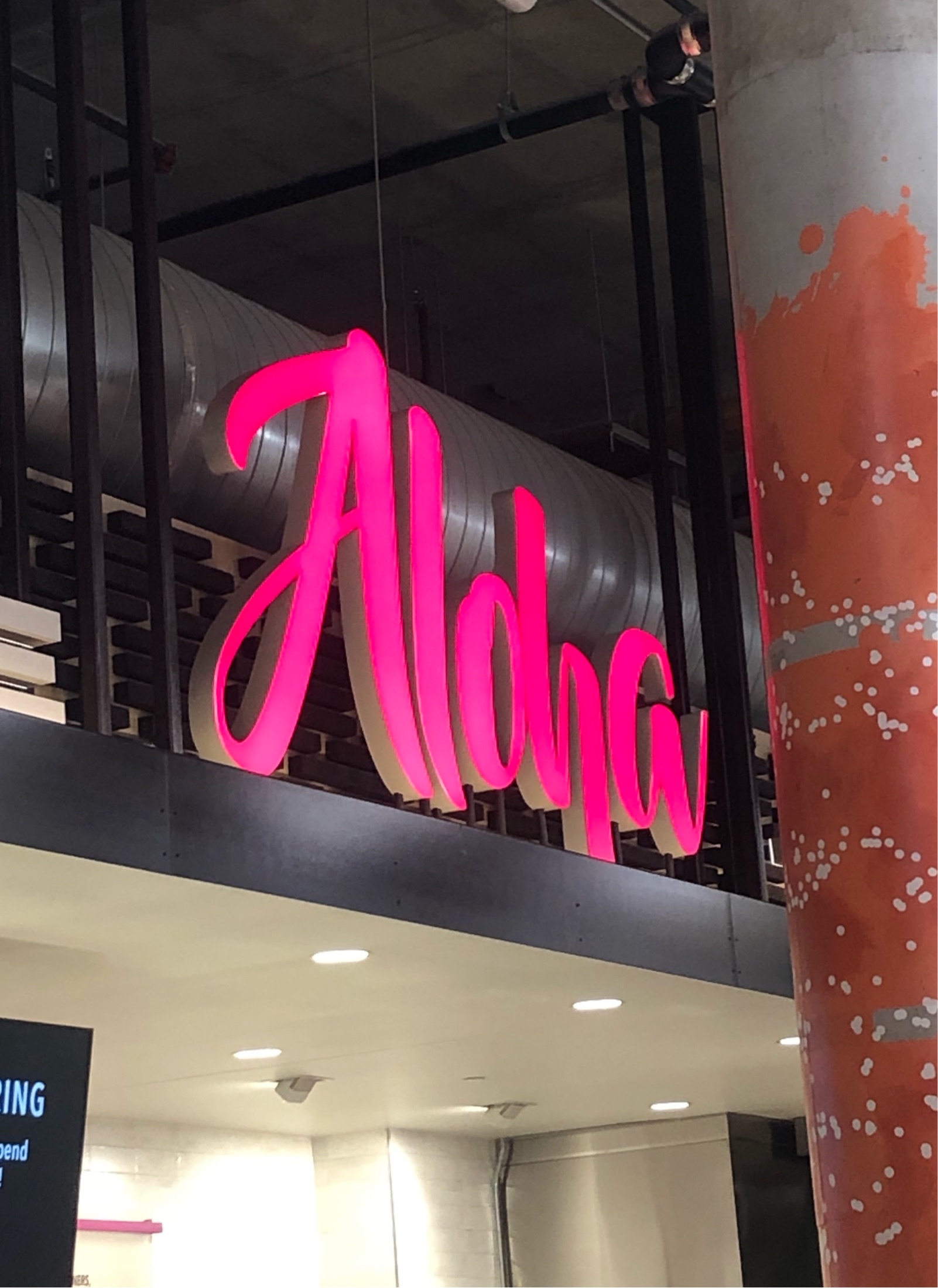
|
47301
|
|
United States
Honolulu
|
|
|
GM EXTRA CREDIT This aloha sign was in whole foods - in the food/deli area. I'm not quite sure why they have the word aloha just kind of floading in the deli because it doesn't really correlate to anything. This makes me think about how the word aloha is overused and that they just put it anywhere and everywhere.
|
Multilingual Hawaiʻi
|
|